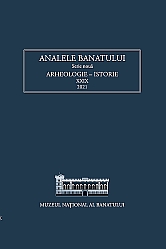Human skeletal remains discovered in Moșnița Veche (west of Romania) belonging to Bodrogkeresztúr Culture
Human skeletal remains discovered in Moșnița Veche (west of Romania) belonging to Bodrogkeresztúr Culture
Author(s): Stefan Popa, Ionela Radac, Bogdan Alin CraiovanSubject(s): Archaeology, Local History / Microhistory, Prehistory
Published by: Editura Mega Print SRL
Keywords: eneolithic; Carpathian Basin; burial; interment; physical anthropology;
Summary/Abstract: This article presents the anthropological analysis of six individuals belonging to the Bodrogkeresztúr culture from an archaeological site situated in West Romania. These results will add new data to a cronocultural spectrum that has a gap in knowledge from this geographical region. Macroscopic observations were used to record the specific morphological aspects of the bones that determine the completeness of the skeletons, surface preservation, stature estimation, sex determination, age at death, non-metric traits, bone pathologies and entheses scoring. Our results indicate that there are 2 females, 3 males and one with ambiguous sex determination, age at death between 20 and 50 years old, and 162,08 ± 4,66 cm mean stature. Observed pathologies include cribra orbitalia, cribra cranii, dental pathologies and traumatic lesions on the cranial and post-cranial skeleton. Non-metric traits recorded like squatting facets, vastus notch, rhomboid fossae or femur plaque can be an indicator of the physical activities of this Eneolithic population. Entheses scoring shows a pattern on three skeletons from grave M7 on the insertion point for m. brachioradialis. The results may be an indicator that they had an agricultural lifestyle.
Journal: Analele Banatului S.N. Arheologie-Istorie
- Issue Year: XXIX/2021
- Issue No: 1
- Page Range: 137-149
- Page Count: 13
- Language: English

